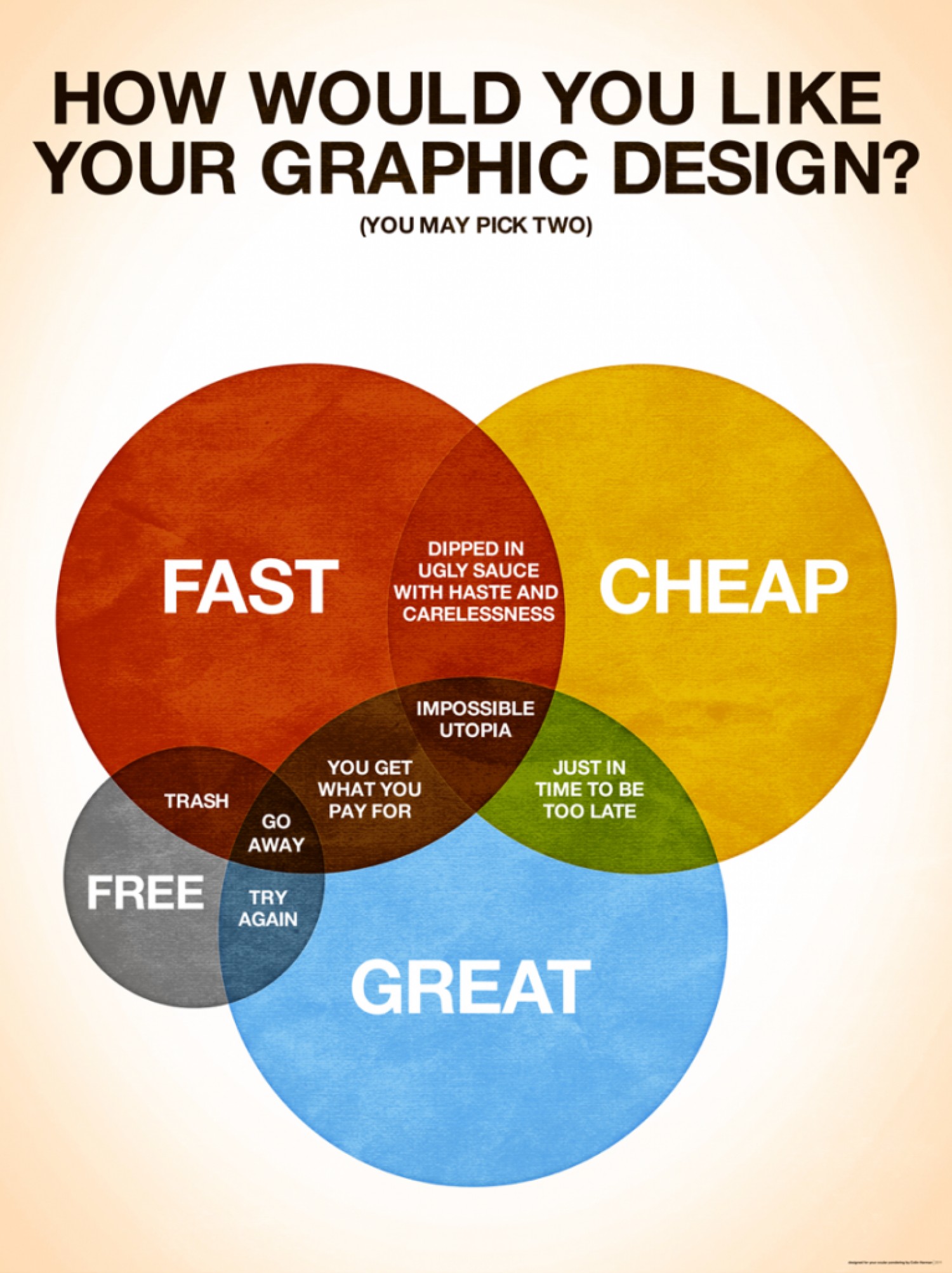Advice to my recent graduates . . .
These are a few things that I’ve learned and experienced in my few years out of school that I think every young creative professional or recent graduate should know and practice.
Any experience is good experience. But that doesn’t mean you sell yourself short.
A lot of people have a very black and white view of how freelance projects or projects for friends should work. Most people think, and rightly so, if you are providing a service you should get paid your rate and if the client can not pay that, then you have to turn them away.
While I do agree with them in most cases, one of the hardest things for a unemployed, recent graduate to do is to build their portfolio with client work. What if you don’t know what your rate is? What if a client gives you a number that you know is too low? What if your best friend is asking for a favor?
A lot of students go into the workforce thinking that freelance is the sustaining answer during unemployment. It can be extremely helpful but is often extremely unreliable. Clients are vague or too specific, they want a fast, cheap and quality deliverable. One of my favorite infographics illustrates the hopelessness of those desires:
The real lessons you will learn about working freelance are going to be from your own personal experiences. You’ll decide what works for you. But if I can offer any help it would be to urge you to do the following:
- Don’t Work For Free – Have a rate, research what your rate should be: Here is a decent tool to help you. If you decide to work for anything less than your rate (free, discount) make sure the client knows that you will be getting your rate in other ways. For example, when I started out I designed a few things for a friend and as they couldn’t pay, I had much more control over deadline, direction of the piece, and power to end the project whenever. In the end my friend got a good design and I added a project to my portfolio that truly reflected my own design aesthetic.
- Vet & Prep the Client – Clients can make or break a project and it’s extremely important that both you and they realize that during your project you are on a team. First, meet with the client in person, even if you know them. Ask them about their vision, get to know their work load, do they have time to make this project? Do you have time to make this project? Are they easy to talk to and clear about what they want? If so, the second thing is to send them a few prep documents. Most designers have a questionnaire they send out to clients to help flesh out a project’s details in the most unspecific ways. Here are a few resources for a designer’s client questionnaire: Becky Davis Design, Stephanie Scharf, and a great resource for how to create your own: Noupe
- Use a Contract! – This might be the best advice I ever give, but do not — I repeat — do not start a project without a contract in place. Contracts protect you and the client equally. They help the client to know when to expect deliverables, and they help you to know when to expect content, copy, feedback from the client. They help to enforce payment, as well as protect you if payment is missing. A lot of designers skip this step because the client seems unsure about signing one, or the designer doesn’t know how to set one up. Well there are sites for that as well. Docracy is an incredibly useful site that allows you to search existing contracts and edit them to fit your own needs.
In the end, a lot of what I’ve told you is going to be trial and error on your part. Freelance can be a great way to build your portfolio, learn how to work with a client, have an extra source of income, but it has to be managed and honed to fit and work for you.
